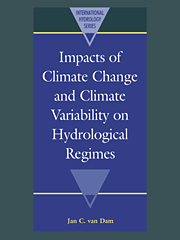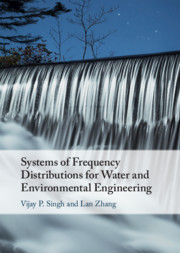Hydroclimatology
Hydroclimatology provides a systematic structure for analyzing how the climate system causes time and space variations (both global and local) in the hydrologic cycle. Changes in the relationship between the climate system and the hydrologic cycle underlie floods, drought and possible future influences of global warming on water resources. Land-based data, satellite data, and computer models contribute to our understanding of the complex time and space variations of physical processes shared by the climate system and the hydrologic cycle. Blending key information from the fields of climatology and hydrology - which are not often found in a single volume - this is an ideal textbook for students in atmospheric science, hydrology, Earth and environmental science, geography, and environmental engineering. It is also a useful reference for academic researchers in these fields.
- Features a different interdisciplinary approach towards hydrology and climatology
- End-of-chapter review questions allow students to assimilate their understanding of the material presented
- Contains a chapter on remote sensing, where students can focus on satellite and radar technologies specifically applicable to hydroclimatology
Reviews & endorsements
"Hydroclimatology: Perspectives and Applications is a comprehensive introductory volume to an interdisciplinary science dedicated to understanding the dynamic between atmospheric and terrestrial water. In a time when concerns are mounting about the future impacts of global climate change on water resources and atmospheric hazard potential, and with the understanding of water vapor as the most abundant global-warming gas, this book provides the framework for those individuals interested in pursuing research in this increasingly important field. The author correctly illustrates the need for further research to refine global climate models by assessing inherent uncertainty. Through a broad review of data-gathering techniques, fundamental hydrology principles, spatial and temporal variations, and extreme hazardous events, Marlyn Shelton’s book would serve as the ideal primary text in an upper-division undergraduate course in hydroclimatology." - Patrick Kahn, California State University, Northridge, Yearbook of the Association of Pacific Coast Geographers
"… a comprehensive introductory volume to an interdisciplinary science dedicated to understanding the dynamic between atmospheric and terrestrial water. … this book provides the framework for those individuals interested in pursuing research in this increasingly important field. … Marlyn Shelton's book would serve as the ideal primary text in an upper-division undergraduate course in hydroclimatology." APCG Yearbook
"… ideally suited as an introductory text for undergraduates in climate science and hydrology, while also providing a valuable reference for researchers in adjacent disciplines and practitioners such as applied hydrologists looking for a broad perspective on this field." Progress in Physical Geography
:...Shelton's book is well thought-out, well written, and well executed. Since there are few, if any, other stand-alone volumes that deal with the concept of hydroclimatology as a unified discipline, it is difficult to compare with existing works. As it stands, however, the process-oriented discussions of hydroclimate topics make this book a step above other related qualitative reference books in hydrology or climatology. This book could easily become an essential reference for a student or teacher in the Earth or atmospheric sciences, and is a must for those looking to bridge the knowledge gap between the respective disciplines. In short, for one needing qualitative descriptions of the numerous topics involved in energy, mass, and moisture transport and related processes as they relate to the Earth--atmosphere system, this book is highly recommended." JAMIE DYER, Bulletin of the American Meteorological Society
“…the book is very much suited as an introductory framework for undergraduate students in climate science and hydrology, and also practitioners such as hydrologists, meteorologists, environmental scientists and engineers looking for a broad perspective on this interdisciplinary field.” – Amgad Salama, Contemporary Physics, May 2011
Product details
January 2009Hardback
9780521848886
440 pages
253 × 180 × 24 mm
1.01kg
Available
Table of Contents
- 1. The realm of hydroclimatology
- 2. The climate system and the hydrologic cycle
- 3. Measuring hydroclimate atmospheric components
- 4. Measuring hydroclimate terrestrial components
- 5. Remote sensing and hydroclimate data
- 6. The runoff process and streamflow
- 7. Hydroclimate spatial variations
- 8. Hydroclimate temporal variations
- 9. Floods: the hydroclimatic extreme of excessive moisture
- 10. Droughts: the hydroclimatic extreme of deficient moisture
- Bibliography
- Index.








